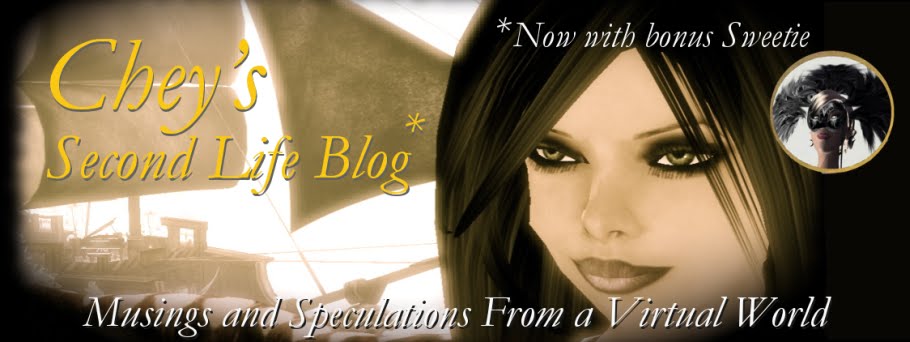 |
| Three-Prim Plants Make the World A Better Place |
Plants
I love Second Life plants. They transform inhospitable landscapes into fields and forests, jungles and prairie, bogs and deserts.
When I first came to Second Life in 2006, plants were made of three linked flat prims offset sixty degrees from one another, like so:
Plant makers found photos of plants on the Internet or in books and altered them in Photoshop, replacing background with transparency, and then importing them into Second Life. The best plant makers drew their plants to avoid the uncanny valley effect.*
The imported textures were pasted onto the flat sides of the prims, and voila! A three-prim plant, like this freebie bird of paradise:
Most three-prim plants had problems. First, from many angles they looked exactly like what they were: textures pasted onto flat prims. Second, many creators didn't bother to set the thin sides of the prims to transparent, causing unsightly lines when the plants were viewed from certain angles. Third, many creators didn't bother to cut the flat prims to make them as thin as possible, making them even more unsightly. And fourth, many plant textures showed white outlines around the visible plants, like so:
Note not only the white outlines around this two-prim amaranthus, but the holes in the leaves and floating specks caused by poor preparation.
Flexible prims arrived on the grid shortly before I did, and plant creators were quick to take advantage of them. With flexibility properly set, three-prim flowers and trees swayed gently in the wind, adding immersivitity to gardens and fields.
Some content creators were extraordinarily skillful in creating these early plants. I bought many from Julia Hathor and Lilith Heart, who were somehow to make their plants seem three-dimensional. Many of their plants are out on Whimsy today.
But most three-prim plants were then, and remain today, simply horrid. Fortunately, something better was about to come along.




No comments:
Post a Comment